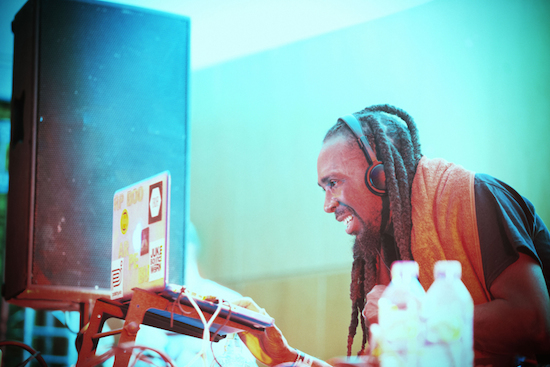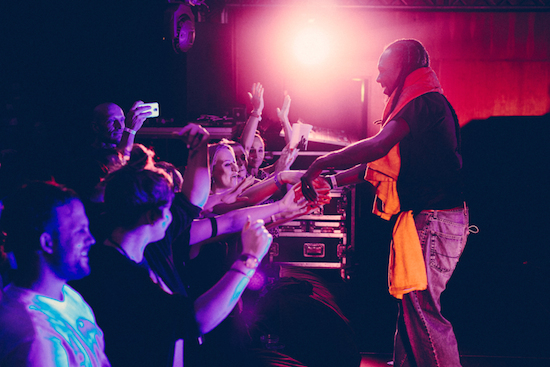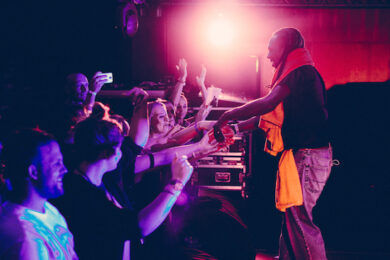Are festivals becoming important bastions of exploratory or even radical music programming? I’ve returned to this question repeatedly since it was posed by Mixmag online editor and sometime Quietus contributor Seb Wheeler during an Unsound Friday panel discussion on club cultures and inclusive spaces. Given the diversity, musical strength and mood of optimism running through this year’s edition of the Krakow festival, it’s a notion at least worth dwelling on. The previous night within the Hotel Forum’s grand wood-panelled surrounds we’d pinballed sweatily from room-to-room like spaced-out rave kids — from fantastically elastic Lisbon batida to arrow-sharp techno and zombie-shuffling avant-funk, from acute-angled grime sonics to the amplified textures of human breath. Early week highlights, meanwhile, had included a captivating hour-long performance on a single unamplified gong (Rrose), vocal and multi-instrumental improvisation that conjured music for a speakeasy in an alien rainforest (Ghédalia Tazartès with Paweł Romańczuk and Andrzej Załęski), electronic music interlaced with philosophy-informed spoken word (Elysia Crampton) and the work of John Coltrane reimagined as sharp, spidery solo guitar calligraphy (Raphael Rogiński). As with UK equivalents such as Tusk or Supernormal, it’s hard to think of many club or venue environments that unite such an array of contrasting sonics and themes, often within a single day’s programming.
It’s also worth reflecting more generally on festivals’ role in electronic and quote-unquote experimental music at this point in time, bearing in mind just how much has changed, and how quickly, in the handful of years since my first trip to Krakow in 2011. Even as recently as then, Unsound felt unusual in the way they drew together non-genre specific line-ups that spanned club, gallery and dive bar, with ears attuned to new currents in music from Poland and worldwide. What’s happened in the meantime? The solidifying of Red Bull’s planet-spanning hegemony, the rise of the Boiler Room, and a spike in attachment of corporate branding to notionally underground music. The emergence of Twitter and music-sharing spaces such as Soundcloud and Bandcamp as platforms through which the social dynamics of an increasingly decentralised electronic music community are visibly and audibly played out. The concurrent growth of a festival circuit that purports to represent exciting new pathways in music yet tends towards bookings homogeneity and audience fatigue.
All of which, as artistic director Mat Schulz admitted in a recent Collateral Damage essay in The Wire, has presented new challenges for Unsound and equivalent long-running institutions such as Berlin’s CTM: how to differentiate oneself in an increasingly crowded space? Last year’s festival theme, ‘The Dream’, attempted a self-reflexive examination of festival culture and the dynamics of a globalised underground scene, but for me its club-centred weekend programming felt perhaps slightly too familiar, too in-line with current trends, to effectively interrogate some of the questions it posed. While still hosting plenty of current press favourites and upcoming names, this year’s event did a much better job in that regard, of which more shortly.
At the end of last year The Wire‘s David Keenan cited Unsound 2014 as one example in his splenetic, energising but rather unfocused rant against the supposed death of the underground. Many of the frustrations articulated in that piece were entirely relatable, and these days it’s a rare and pleasurable event to read a writer lashing out at an entire industry infrastructure. But his implication that social media and the narrowing of the artist-fan-critic distance are largely responsible for a sense of creeping monoculture, glossed over more pertinent issues around the challenges of operating — as promoters, musicians and writers, but above all as listeners and fans — in an increasingly corporate marketing-flavoured electronic music ecosystem.
It’s becoming harder to ignore the glaring dissonances involved, but they’re rarely addressed head-on: how to navigate a world where Keiji Haino performs at a glossy sponsored residency at Shoreditch’s Ace Hotel (critiqued by Richard Thomas in this underlooked gem of an essay), where hefty billboards host advertising stunts for angle-grinder dance music, and where even staunch voices of noisy and experimental sonics write for RBMA, because the available choices are to be co-opted or to be skint? At a time when even nominally underground musics are ceaselessly mined for capital, what does it mean to be authentic or true to your work, and how do you challenge people with something genuinely novel or unexpected? In a climate of increasingly non-local scenes and overpriced pack-’em-in line-ups, how do you create club and festival spaces that respond to and reciprocate the energy and passion invested by audiences; places where people feel like active participants rather than punters?
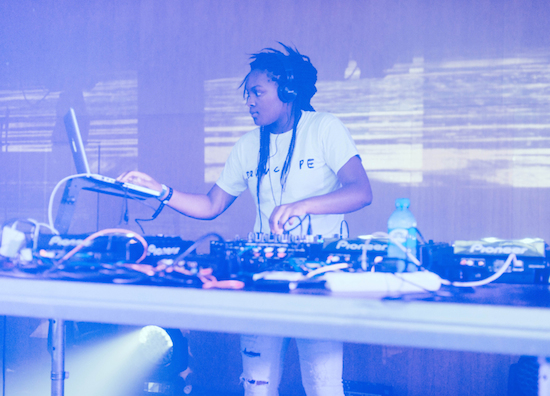
These are no simple answers to these questions, but perhaps one response is to actively make space for other voices. The central conceit to this year’s Unsound theme of ‘Surprise’ is that about one-third of the line-up is left unannounced until after the performances take place, a simple tactic but one which adds an unexpected amount of fun to the week’s atmosphere — Richie Hawtin turning up to perform in Room 2 late on Saturday night is not something I’d ever imagined to see at Unsound, while booking Polish artists like T’ien Lai, Raphael Rogiński and RSS B0YS as surprises ensures that the festival’s growing international audience actually make the effort to watch excellent homegrown music. The anonymous Burial-not-Burial concert in Wieliczka salt mine, meanwhile, is a smart move by the festival organisers — a trick just implausible-yet-possible enough to get the rumour mill buzzing. They should consider keeping the ‘surprise’ element as an ongoing feature.
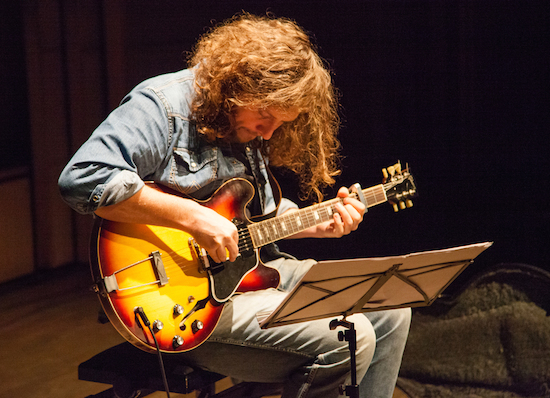
But more striking is how the greater diversity of artists performing and speaking than in previous years changes the overall timbre of the week. From a listener’s perspective, the alpha male muscularity of Powell and Lorenzo Senni’s (great fun) collaborative set as Hot Shotz, or Damien Dubrovnik’s white-hot synth noise, clearly do work in context alongside new beats from the Lisbon-centred Principe crew (DJ Firmeza, Nidia Minaj), Chicago footwork mutations (Jlin, RP Boo), Jersey club (UNIIQU3), radioactive Polish hip-hop (SYNY), deeply moving voice and tape collage (Matana Roberts), and uncategorisable electronic music exploring trans experience and geography (Elysia Crampton). But placing them alongside each other on a line-up — and along with a talks programme in which conversations presented by Repeater Books, The Wire and others actively explore issues of diversity, equality and representation — draws attention to the privilege dynamics that exist among this varied group of people, who come from vastly different backgrounds and perspectives but have all become participants in this shared, nebulous global electronic music conversation.
Whether intentionally or not, in the relative absence of local foci Unsound has evolved into something of an annual meeting place for this geographically diffuse group of musicians and listeners. This year’s festival underscores just how important such shared physical spaces are for solidifying a sense of community and for fostering open, thoughtful and considerate dialogue. One positive consequence of especially Twitter’s emergence as a platform for conversation is the greater visibility and force it’s given to pressing issues of inequality and power that exist in non-mainstream music scenes (as elsewhere). But as a communications format that encourages people to perceive others as reducible to their opinions, and thus drives polarisation, misinterpretation and anxiety, it’s hardly fit for purpose as a space for nuanced discussion. Meandering hour-long panel talks at a music festival are never going to provide conclusive answers either. But they can succeed in adding context to performances and raising questions to be discussed in person later — a fascinating Wire-presented panel featuring Matana Roberts and Raphael Rogiński exploring Polish reinterpretations of radical African-American music; UNIIQU3 discussing the origins and appropriation of Jersey club with RA, ahead of her witty and raucous set at 4am the same night. Many of the subjects discussed during the talks programme already seem to be at the forefront of many people’s minds, and they reverberate through conversations throughout the week.
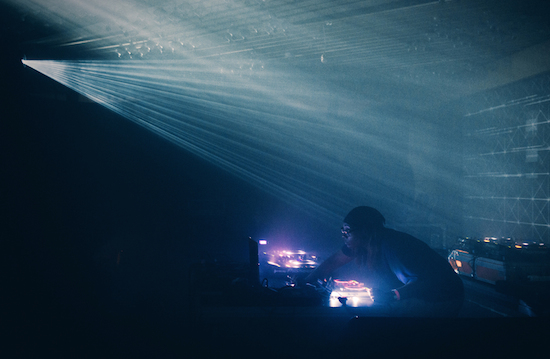
It helps that Unsound still remains a small enough affair to feel like a community; you meet the same faces day after day at concerts and bars. A series of three morning shows encourage people to drag themselves out early enough to see the best of the day through the post-vodka haze. Guitarist Rogiński is my discovery of the week, his technique expressive, exploratory and fluid, splaying Coltrane’s pieces out into beautiful, unfamiliar thickets of jagged notes. Rrose’s Tuesday performance of James Tenney’s visual score Having Never Written A Note For Percussion fills a wood-panelled hall with a hypnotic moiré-patterned mist of shimmering overtones and unexpectedly intense waves of sub-bass. Shackleton and Nisennenmondai’s dream-team Friday night set is a similar feast of tesselation, an unerringly propulsive, knifepoint-tense hour that’s probably the most dazzling techno I’ve heard all year.
Clear textural similarities are present in the barbed hand-struck percussion of Jlin’s debut live set the following night. Yet her vision of dance music is radically rhythmically disaggregated compared to techno’s linear momentum, its spiky triplet meter enabling it to ooze between 4/4 and 6/8 time signatures almost imperceptibly — leading to shock when you suddenly notice that you’re dancing a tense, shoulder-rolling waltz. Next to RP Boo’s pure euphoric party motion the previous night, moments like these underscore how far Jlin’s music has already extrapolated from the footwork that inspires her. Corralling music into beat structures for the floor only reduces its possibilities if it’s done as a default choice; her work conclusively torpedoes the notion that contemporary dance music lacks the capacity to innovate and surprise.
Feature continues below photos
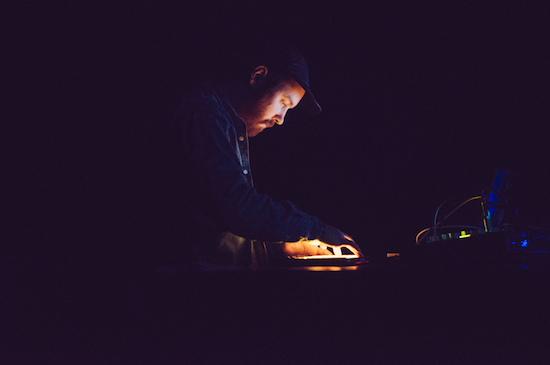
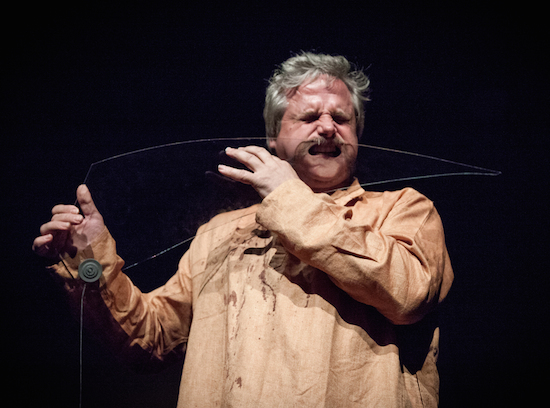
The warmth and sincerity of Boo, UNIIQU3 and Jlin’s sets reflects an encouraging lack of cynicism in music and performance throughout the week. Another personal favourite is Fis’ surprise Saturday show, the first time I’ve seen his wonderfully tactile, dense sound system music on a forceful set of speakers. With the room dark save his laptop’s glow, you feel the intense bass-depth and many-directional motion on a visceral level, emphasising his music’s intimacy; it feels like how it might sound if you simultaneously attached contact mics onto each of your internal organs, summing and amplifying the human body’s multiple rhythms. Lucas Abela’s unannounced show the previous evening — a short sharp shock that concludes with him headbutting straight through his infamous contact mic’d sheet of glass — is inclusive and joyful, with its blend of unhinged humour and blistering sonic attack drawing from the same wellspring as V/Vm’s 2012 Unsound reunion shows. Something of the same spirit is also present during Mat Dryhurst’s presentation of his newly launched Saga framework, an artist-minded version of a Soundcloud-like music platform, when he admits that although he doesn’t expect a huge user base, the project’s purpose is more to start imagining what alternatives to the dominant paradigm might look like. Later, onstage providing visuals for Holly Herndon and Colin Self, he taps out in real time, typos and all, a thanks to the audience and a puckish declaration of "Fuck the NSA, seriously". And all of this without a glowing Red Bull logo in sight.
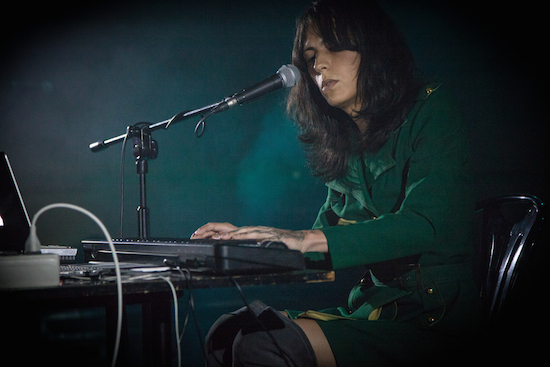
But it’s Elysia Crampton’s (announced) performance early in the week that proves most compelling in its engagement with the festival’s surprise theme. Her Tuesday evening show, delivered to an attentive audience sat cross-legged on Manggha’s wooden floor, meshes sections of her music with passages of spoken word, taken from Crampton’s own writings on transness and trans visibility, cosmology and object-oriented thought. Her readings are idea-dense and packed with evocative imagery, and there’s an intriguing open-endedness to the way that their strands of thought bleed into an extended Q&A with Philip Sherburne the following afternoon. They’re a subtle and effective way to communicate the thematic richness of her records from this year, Moth and the epic American Drift, in a live context that could potentially strip them of their complexity; the rhythms of her speech are mirrored by, and in turn mirror, the music’s smoky harmonies, bursts of shimmering synth-stuff and lilting momentum. For all her readings’ philosophical modality and jargon-heavy academic tone, this complementary relationship between voice and music makes the performance feel distinctly unpretentious, driven by curiosity and a sense of play. At show’s opening she suggests we pay attention to the sounds’ "haptic" qualities and the "clowny" nature of their arrangements: how their spiralling harmonies elude the beat-grid, how Lil Jon’s hoarse sampled chants grind against their pristine synthetic surrounds. I’m reminded of those words again when her talk the next day ends with a discussion of the monster-truck rally video for her E+E track ‘FIRE GUT’ — yet another weaving together of the strange, the improbable and the beautiful.
